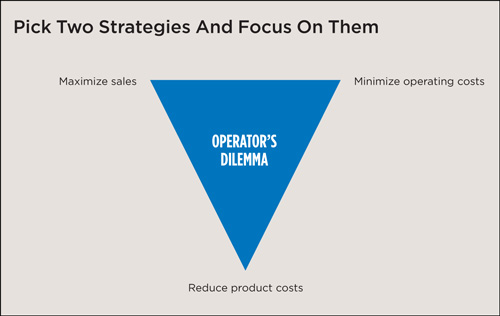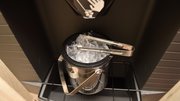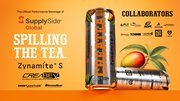Blog
The Vending Operators Dilemma
October 21, 2015 | Dr. Paresh Patel
TAGS: Vending Times columnist, vending, office coffee service, engineer's dilemma, fast cheap conflict, Operator's Dilemma, maximize sales, reduce product costs, minimize operating costs, Courtesy Vending |
In the engineering world, there is a concept referred to as the "engineer's dilemma." Simply stated, you can have something good, fast or cheap -- but you have to pick two. The dilemma is that you can't have all three because they conflict, so you must pick the two that matter most.
This makes sense intuitively, and it applies to many areas of our lives. For example, if you wanted to have your house painted: You can have it good and cheap, but it won't be fast; or you can have it good and fast, but it won't be cheap; or you can have it fast and cheap, but it won't be good.
Depending on the circumstances, you will select the option that is best for your needs. Whether you realize it or not, you make these tradeoffs throughout your business and personal life.
In vending, I have developed a concept of tradeoffs that I call the Operator's Dilemma. The operator's dilemma, like the engineer's, has three conflicting objectives, and the operator must decide which two are the most important and where to focus his or her efforts. There is nothing inherently right or wrong about any of the objectives.
In the operator's dilemma, the three objectives are: maximizing sales, reducing product costs and minimizing operating costs. The operator cannot optimize all three -- again, it's not to say all three are not important. As an operator, you must decide which two are most important to you and then align your company around those two. If the operator attempts to optimize all three, the company cannot excel at any of them and will be performing sub-optimally, as they are conflicting objectives.
Maximize Sales
If an operator is concerned about building a brand, merchandising machines, exceptional customer service, providing multiple payment options to customers, operating updated equipment, monitoring expiration dates, frequently changing products in machines and taking care of service calls 24/7/365 -- this indicates that the company has a focus on maximizing sales. Quite obviously, no operator will admit that he or she doesn't want to maximize sales; but the actions a company takes are indicative of the extent to which their company culture is aligned toward this objective. All of these efforts increase the top-line number on the vending operation's income statement.
Reduce Product Cost
A company that is focused on optimizing the buying side will try to maximize its rebates, buy items on specials or through deals, purchase larger quantities of product into inventory (forward buy) and negotiate heavily with brokers and manufacturers. These efforts reduce the cost of goods by line item and improve the gross margin on their income statements. Product selection may be dictated by better deals, and less on the analysis of sales activity and customer demands.
Minimize Operating Cost
A focus on operating costs will be evident if a company works to optimize route operations through scheduling and routing, number of stops per driver, weekly fills, collections, average collection per stop, prekitting and pick-to-light systems, along with prioritization of service calls, minimizing parts inventory and percentage sell-outs in a machine. These practices minimize operating costs and improve a company's operating expense on its income statement.
Why Not All Three?
Ideally, an operator would want to maximize sales, reduce product costs and minimize operating costs. On the income statement, we want to have the highest sales, largest gross margin and smallest operating expense. We want it all. The key words here are maximize and minimize. All three elements cannot be optimized since they have opposing impacts. Think of a triangle (see illustration on the next page), and try to get the three corners to all point in one direction. The best that can happen is that two corners will be at the highest point, and one will inevitably not be on the same level. However, you can select which two objectives are aligned, and achieve the same results with any two you pick.
My Company
At my vending company, it was very clear from the beginning which two objectives we would choose: maximizing sales and minimizing operating costs. And we spent the bulk of our effort in these areas. We worked hard to improve sales and run the company very efficiently. We had a 24/7/365 live answering service and responded to service calls in a timely manner, merchandised our machines, analyzed sales data and made product changes every month. We also built a brand and focused on exceptional customer service.
On the operating side, we strived for economy and efficiency. We purchased used trucks, so we never had vehicle loans or lease payments. And we used technology to improve route operations.
What we didn't do was negotiate heavily with product brokers, or try to maximize rebates. Sure, we tried to qualify for rebates when possible, but it had little impact on our product-stocking decisions. Instead of having the brokers present their deals to us and pick from those deals, we first decided which products we wanted to stock and then we went to the brokers and asked what kind of deal they could give us on those products. Because of this, we received some program pricing, but usually not as much as we would have if we bought the products they were trying to push or highlight. We were okay with this because our focus was to fill product in the machines based on data and customer demand, not deals, as we were working to maximize sales.
The prices we were paying for products, in most instances, were much higher than our competitors were paying. Interestingly, because we focused on sales and customer service, we were able to price higher in our machines, which allowed us to have a competitive cost of goods percentage, compared to sales. We were the highest-priced competitor in our market, and because of this, our cost of goods number was still very healthy, even though we didn't spend time negotiating deals. We hadn't optimized our product cost, but we were making up for it by earning higher prices for products due to our commitment to service.
No Right Or Wrong
I would like to reiterate that there is absolutely no right or wrong strategy here, and no strategy is better than another. Companies can be equally successful picking different approaches. The key is to know which ones are your areas of focus and then excel in those.
Tell Your Customers
Once you have a firm understanding of the strategy you have selected, there is no reason to to keep it hidden. You can speak openly about it when soliciting new customers and completing requests for proposals. In our case, I found it to be very helpful in winning deals. We told our customers what we focused on and what we didn't. We went as far as being open about how we were not the low-price competitor. If a customer wanted the lowest price, for instance, then they wouldn't ordinarily hire us; but if they wanted their machines well cared for and merchandised according to what their employees wanted, then they would select us. It is best to have customers who are aligned with your strategy for account retention.
What's impressive about the strategy selection is that when you make it clear where your focus is, you put the "dilemma" back on the vending account for what they want. Think back to the house-painting example from above -- you decide which painter to go with based on what's important to you. In the case of a vending account, do they really want the lowest price? Do they want the freshest product? Do they want service? Do they want variety? This will drive which operator they select and it will result in a long-term, successful relationship for all parties involved.

Which of these three strategies is your company aligned around? Which two do you pick? In summary:
1. If you're maximizing sales and reducing product costs, you're not focused on minimizing operating costs.
2. If you're reducing product costs and minimizing operating costs, you're not focused on maximizing sales.
3. If you're focused on maximizing sales and minimizing operating costs, you're not focused on reducing product costs.
None of these is right or wrong, but pick clearly and stick with it as you build out your company and be sure to communicate your area of focus to your customers.
 PARESH PATEL, Ph.D, is a lifelong entrepreneur and founder and chief executive of Pay Range, a Bluetooth-enabled mobile payment system for vending and amusements. He also founded Vendscreen in 2010 and ran a vending operation, Courtesy Vending (Portland, OR) from 1999 to 2013.
PARESH PATEL, Ph.D, is a lifelong entrepreneur and founder and chief executive of Pay Range, a Bluetooth-enabled mobile payment system for vending and amusements. He also founded Vendscreen in 2010 and ran a vending operation, Courtesy Vending (Portland, OR) from 1999 to 2013.






